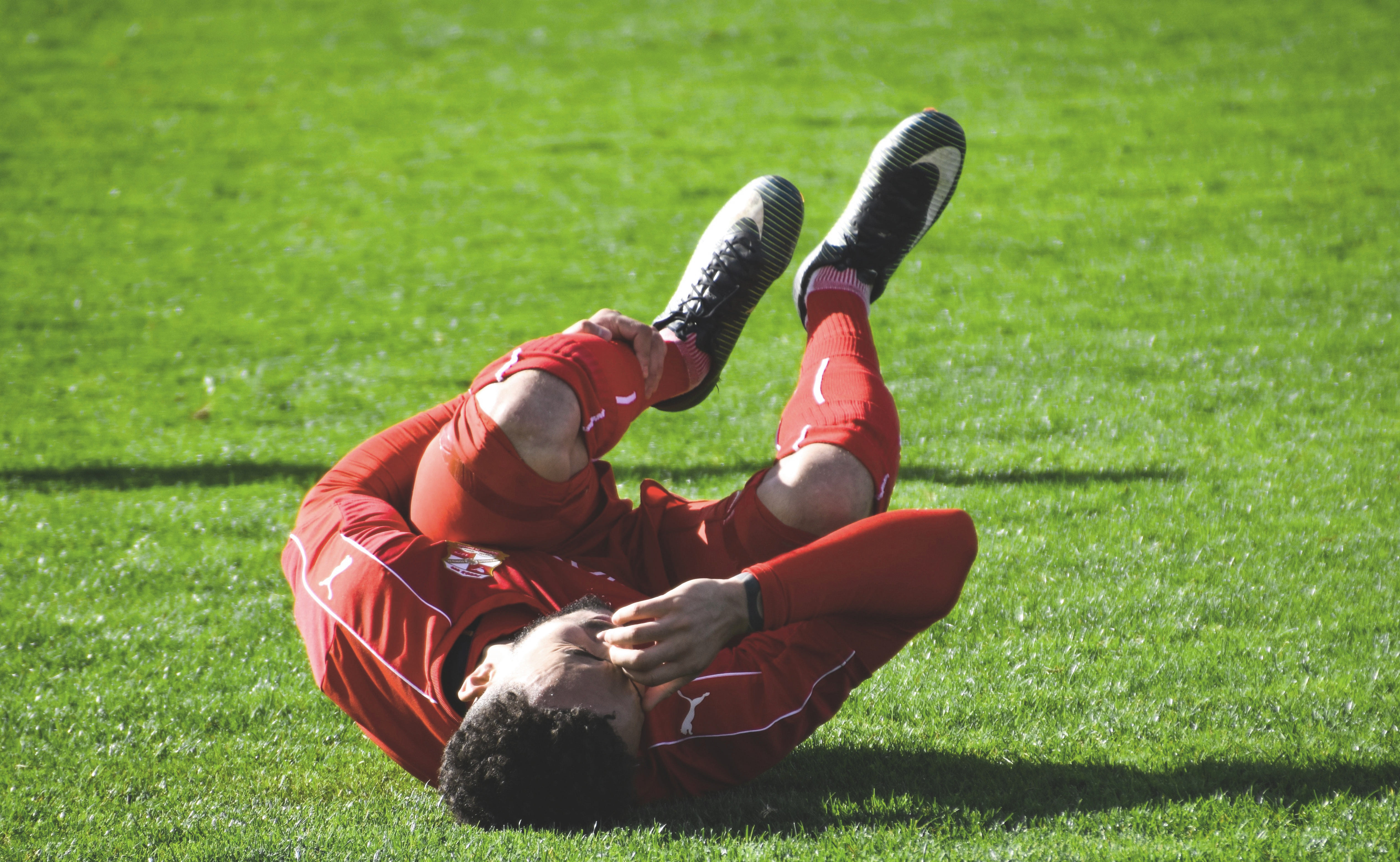Is your knee pain stopping you from running or enjoying your sport? The human body is amazing at healing itself, however on occasion it requires a helping hand. The list below identifies the key signs that you should look out for following a knee injury. If any of these signs are present, then call us today to get to the bottom of your pain. We are injury rehab specialists and experts in assessing and diagnosing injuries.

If You Have Any Of The Following Signs, See A Physio Today And Get To The Bottom Of Your Pain!
#1 My Knee Is Swollen Like A Balloon!
If your knee looks or feels puffy and swollen (see picture below), this indicates that there is excess fluid in the joint. This is NOT normal. Swelling (or 'effusion', which is the correct medical term) is a sign of an intra-articular knee injury (i.e. where you've injured a structure inside the knee joint). Intra-articular knee structures include the ACL, Meniscus and Bones. Your knee needs to be assessed by a rehab specialist, to determine which structure(s) you've injured.

#2 I Can't Fully Straighten My Knee!
Being able to fully straighten your knee is vital for walking normally. If you can't get your knee to zero degrees, then you will walk with a limp, which can cause issues elsewhere up or down the chain. Reasons for being unable to fully straighten your knee include quad muscle atrophy or inhibition, a structural block being present or most commonly, the presence of excess swelling in the joint (see #1 above). Finding out the reason why your knee doesn't fully straighten is key.

#3 I Can't Walk Properly!
As discussed in #2, one reason why you may not be walking normally is because you can't fully straighten your knee. Other reasons include pain and/or swelling. Everyone is different, so finding out what is stopping you walking normally is key.

#4 My Pain Isn't Improving, As Expected!
Most minor knee injuries should settle down given the appropriate management. However, some minor injuries and most traumatic knee injuries can lead to longer term pain and mobility issues. If your knee pain hasn't settled down as you expected, find out why and get it assessed today.

#5 Clicking, Locking or Instability!
Clicking in the knees is relatively common and usually painless, so I wouldn't lose sleep over it. However, if you experience clicking following an injury that is different than normal, with the click being painful, then get this looked at. True locking is when the knee locks up and you can't bend or straighten it. This can occasionally occur following a meniscus injury (the meniscus is a layer of cartilage that lies between the bones in your knee). Instability, where the knee gives way when walking, can also be common following an ACL or meniscus injury. If you've recently injured your knee and you recognise any of these signs, get your knee assessed today.
What To Expect From Us
A Comprehensive Injury Assessment |
A Diagnosis |
A Structured Rehab Plan |
Physio, Gym & Pitch-Based Running Sessions |
Full Body Analysis |
Return To Sport Testing |
Discharge |
What Our Clients Say
"I was involved in a rugby tackle that left me with a serious knee injury, which required extensive surgery. The surgery involved ALL, ACL & MCL reconstructions as well as medial & lateral meniscus repairs. I had such a long road to recovery, with Declan being a critical part in my return to sport. He has a friendly, motivating and professional manner. Declan encouraged me every step of the way and amazingly, I am back playing rugby, hunting in the hills and skiing the slopes"
Benjamin

If you would like to know more or you have any questions, drop me an email at info@buanphysio.ie. Alternatively, book online following the link below. I would love to take you through your rehab journey and back to the sport that you love playing.
Start your rehab today!
Knee image taken from Guyver, P.M., Arthur, C.H., & Hand, C.J. (2014). The acutely swollen knee. Part 1: Management of atraumatic pathology. Journal of the Royal Naval Medical Service, 100 1, 24-33 .
